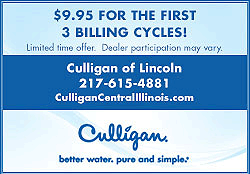|
'Selfie zones,' misting
towers, might reduce scenic-spot drownings
 Send a link to a friend
Send a link to a friend
[October 17, 2015]
By Janice Neumann
(Reuters Health) – At Yosemite National Park in California, most
accidental deaths are water-related, with people trying to cool off or
take pictures, new research shows.
|
|
 More than 80 percent of the park’s water-related fatalities involve
the Merced River and the Mist Trail that runs alongside it,
researchers write in the journal Injury Prevention. In many cases,
visitors drowned after falling into the river and being swept
downstream or over a waterfall. More than 80 percent of the park’s water-related fatalities involve
the Merced River and the Mist Trail that runs alongside it,
researchers write in the journal Injury Prevention. In many cases,
visitors drowned after falling into the river and being swept
downstream or over a waterfall.
People tend to think warnings don’t apply to them, the researchers
say.
“We see people have a lot of biases in their head that they are
somewhat exceptional,” said lead author Deborah Girasek, director of
social and behavioral sciences at the Uniformed Services University
of the Health Sciences in Bethesda, Maryland.
It's typical of humans, she added, to think something "won’t be
dangerous to them, but will be to someone else.”
To learn what motivates park visitors to venture into danger zones,
Girasek and colleagues from Yosemite’s Division of Visitor and
Resource Protection watched hikers along the Mist trail between June
and September 2013.

After hikers went into either of two risky areas – one near the top
of a waterfall, the other near a footbridge across the river - the
researchers approached them and asked them to take a four-minute
survey. Nearly 400, or more than two-thirds, agreed.
More males than females ventured near the most dangerous sites and
they tended to be younger than 28 years old. The experienced trail
hikers were also more likely to decide beforehand they would take
the risks, and veteran Mist Trail hikers were more likely to say
they felt safe.
“We see in a lot of the risk literature that people who are familiar
with something are much less likely to read the directions or
warnings . . . with that comes a sense of safety or comfort,”
Girasek told Reuters Health.
Reasons hikers gave for going near or into the water included
wanting to cool off, to look at the scenic views, rest or take
pictures.
Most of the hikers said others should be able to go where they had
gone.
“The people who were in these risk zones . . . were not accurate
judges of how safe it was,” Girasek said.
[to top of second column] |

The survey responses "remind us that fresh water is appealing to
outdoor enthusiasts on many levels. Safe cooling alternatives, such
as misters, might be explored to see if they can compete with a
river’s lure," the researchers wrote.
And, they learned, "younger people (who are at greater risk of a
water-related fatality) were more inclined than older hikers to
enter a risk zone to have their picture taken or climb on rocks.
Recreational settings might want to test the appeal of climbing or
‘selfie’ locations that are set up at a safe distance from water
hazards."
Jonathan Howland, who directs the Injury Prevention Center at Boston
University Medical Center, said the study would be helpful to public
health and park administrators, noting recent hiker deaths during
flash flooding at Zion National Park in Utah.
“Warnings about risks are mandated with many consumer products,
including toys, pharmaceuticals, power tools, cleaning products,
ladders . . . .,” said Howland, who wasn’t involved in the study, by
email. “This approach should be extended to parks and other
recreational areas administered by public agencies.
SOURCE: http://bit.ly/1G05ov4 Injury Prevention, online September
28, 2015.
[© 2015 Thomson Reuters. All rights
reserved.] Copyright 2015 Reuters. All rights reserved. This material may not be published,
broadcast, rewritten or redistributed.

 |